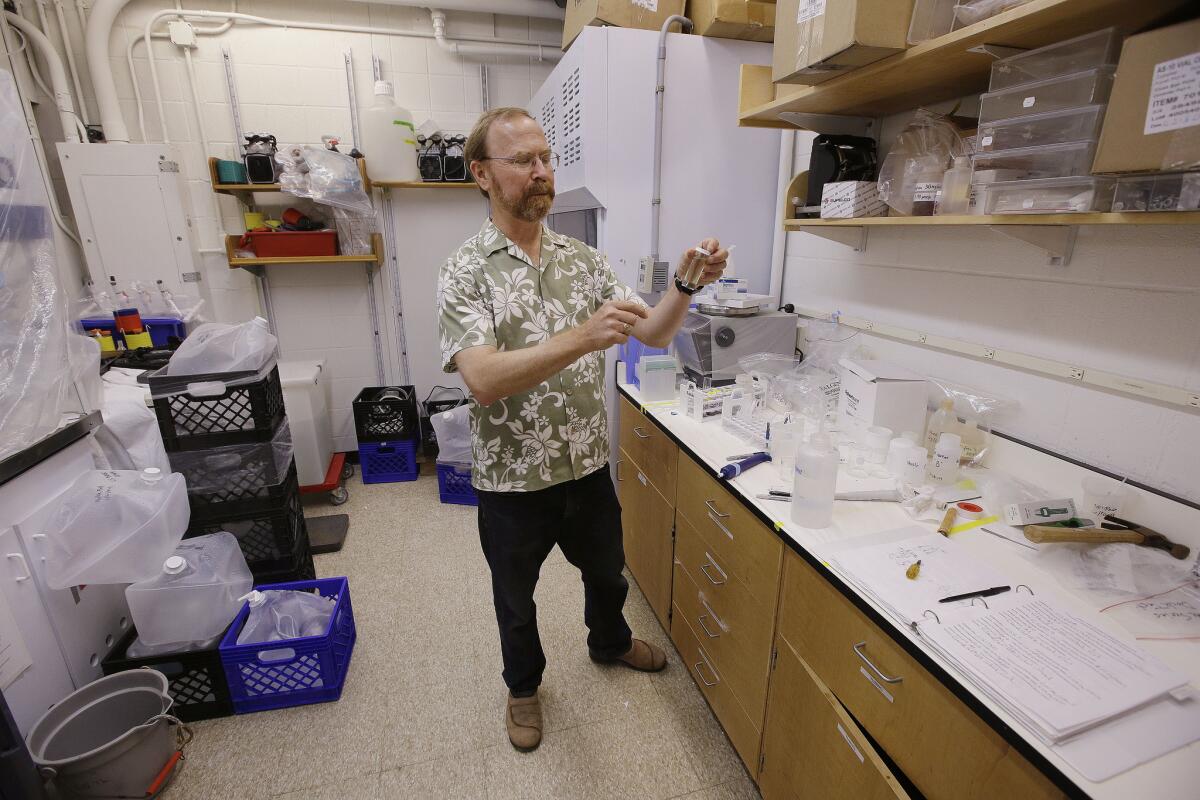West Coast waters still safe from radioactivity, but testing continues

- Share via
Remember all those headlines after the Fukushima reactor disaster in 2011? “The Coast Is Toast.” “Holy Fukushima – Radiation From Japan Is Already Killing North Americans.” “28 Signs That the West Coast Is Being Absolutely Fried With Nuclear Radiation From Fukushima.”
Well, so far we all still seem to be doing just fine, and actually some good has come from all of that fear-mongering.
Ken Buesseler, a senior scientist at the Woods Hole Oceanographic Institution and director of WHOI’s Center for Marine and Environmental Radioactivity, has turned that citizen concern into a nifty bit of fundraising, crowd-sourcing the testing of coastal waters from Alaska to La Jolla.
To date, more than 30 sampling sites have been launched via the website Our Radioactive Ocean. The organization has raised funds from groups as diverse as a junior high science class in Santa Barbara and a group of surfers in Santa Cruz.
The testing not only measures levels of radiation from the Fukushima disaster, but it also helps fill in some holes in basic science about how radioactivity behaves in the open ocean -- how it follows ocean currents and how much it is diluted.
The good news is that so far the testing has turned up only trace amounts of radioactive cesium 137, and that is probably left over from 1950s-era nuclear tests. Cesium 134, which could be traced to the Fukushima disaster, has not yet shown up.
Buesseler believes that it will, eventually -- Canadian researchers have found it in deeper waters -- but also at very low levels. While cesium 137 can linger for decades, cesium 134 has a radioactive half-life of only two years.
“What we measured in the waters at Fukushima was very, very concerning,” Buesseler says. “But that was at levels 50 million times higher than what’s off California today.”
The highest predictions for California waters are in the neighborhood of 30 becquerels per cubic meter of water -- that’s far below the 7,400 becquerels that is the Environmental Protection Agency’s threshold for safe drinking water.
Buesseler expects the level of cesium 134 in West Coast waters to peak out at about 10 becquerels. At that level, he says, “If you were to swim in that water 365 days, 6 hours day, the dose would be 500 times less than a single dental X-ray.”
As for danger from contaminated seafood, he points out that cesium is different than other contaminants such as, say, mercury, in that rather than accumulating, it flushes from the flesh of the fish fairly quickly.
If a fish had been swimming in water that was high in cesium, Buesseler says that just two months of swimming in clean water would reduce its level of contamination by at least half.
Buesseler is careful to point out that this does not mean that we are in the clear as far as the aftereffects of Fukushima. The Japanese government still has not figured out a way to contain all of the radioactive waste.
And he is continuing to raise money for further testing.
“Look, ideally this is the kind of thing our government should be doing,” Buesseler says. “But no one is picking it up. The DOE [Department of Energy] says it doesn’t do ocean research, and NOAA [the National Oceanic and Atmospheric Administration] says it doesn’t do radionuclides. But when there’s this kind of public interest, we should have governmental support. But until that happens, we still need all the help we can get.”
Are you a food geek? Follow me on Twitter @russ_parsons1
More to Read
Eat your way across L.A.
Get our weekly Tasting Notes newsletter for reviews, news and more.
You may occasionally receive promotional content from the Los Angeles Times.











